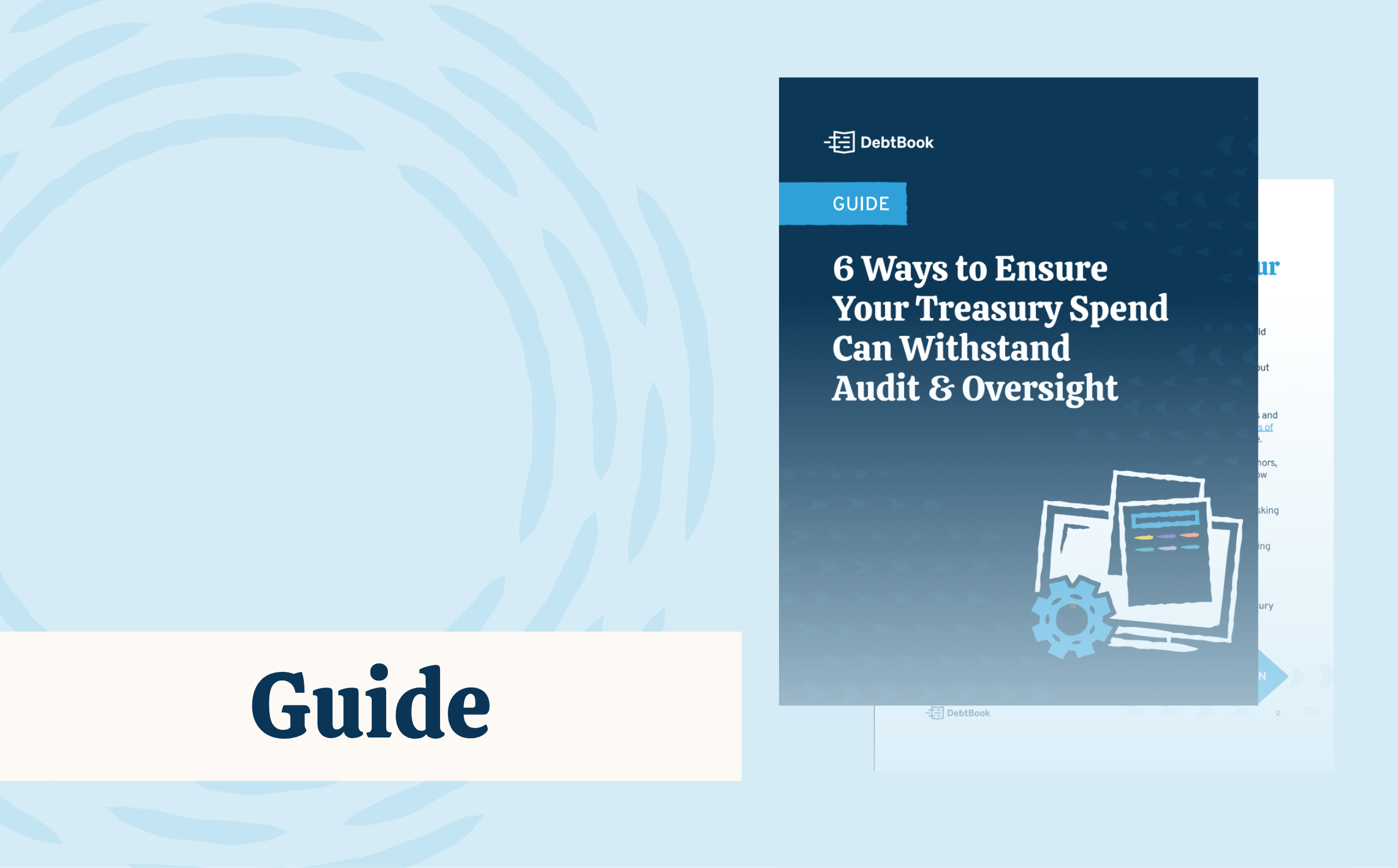Timely data is the backbone of effective decision-making. Whether it's forecasting cash flow, managing investments, or ensuring compliance with regulatory requirements, having access to reliable data is critical. Yet, many treasury teams struggle with decentralized data management, where information is scattered across different systems, departments, or even geographical locations.
This fragmentation, often referred to as data silos, pose significant challenges for treasury teams. Treasurers find themselves spending more time reconciling discrepancies and less time on strategic activities that drive organizational success. The lack of centralized data not only hinders operational efficiency but also increases the risk of errors, delays in reporting, and missed opportunities for optimization.
What are Data Silos?
Data silos occur when information is isolated within specific departments, systems, or platforms, preventing it from being easily accessed or shared across an organization. In treasury operations, this means that critical financial data might be stored in separate databases or software programs, each controlled by different teams.
As a result, these silos create barriers to a holistic view of the organization's financial position, leading to inefficiencies and potential risks.
Example of a Data Silo
An example of a data silo in treasury could be the separation of cash flow data across different departments or systems.
For instance, the treasury team might use one system to manage daily cash positions and liquidity, while the accounts payable department uses a separate system to track outgoing payments. If these systems are not integrated, the treasury team may not have real-time visibility into pending payments, leading to discrepancies in cash flow forecasts.
As a result, the treasury team could spend significant time reconciling data between the two systems and manually updating their cash flow projections based on information that isn’t readily accessible.
Common Causes
- Departmental Separation: In many organizations, different departments manage their own data independently. This separation can lead to a lack of communication and coordination, with each department operating in its own bubble.
- Use of Disparate Systems: Treasury teams often rely on multiple software solutions for various functions, such as cash management, risk assessment, and reporting. When these systems are not integrated, they create isolated pockets of data that don’t easily communicate with one another, making it difficult to compile a comprehensive financial picture.
- Lack of Integrated Technology: Without a unified technology platform that brings together data from all relevant sources, treasury operations can become fragmented. The absence of integrated technology exacerbates the challenges of data silos, forcing teams to rely on manual processes to bridge the gaps between systems.
What is Centralized Data Management?
Centralized data management involves consolidating all financial data into a single, unified platform that is accessible to all relevant teams within an organization. By bringing together information from different departments and systems, it eliminates the barriers created by data silos.
This approach ensures that everyone is working with the same accurate, up-to-date data, improving efficiency, reducing errors, and enabling better decision-making across the organization.
The Consequences of Decentralized Data Management
Decentralized data management in treasury operations can lead to significant challenges that hinder efficiency, increase risks, and disrupt collaboration.
Operational Inefficiencies
- Time-Consuming Reconciliation Processes: When data is spread across multiple systems, treasury teams must spend considerable time reconciling discrepancies between records. This process is not only labor-intensive but also slows down the overall workflow, diverting resources away from more strategic activities.
- Duplication of Efforts: Decentralized data often leads to different departments performing overlapping tasks, such as entering the same data into separate systems. This duplication not only wastes time but also increases the potential for errors, as inconsistent data may be entered into various systems, further complicating reconciliation efforts.
Risk Management Issues
- Difficulty in Assessing Real-Time Financial Positions: Without centralized data, treasury teams struggle to get a clear, real-time view of the organization’s financial position. This lack of visibility can make it difficult to manage cash flow, investments, and risks effectively, leading to potential financial shortfalls or missed opportunities.
-
Increased Risk of Non-Compliance: Decentralized data management complicates the process of ensuring compliance with regulatory requirements. When data is scattered across multiple systems, it’s harder to maintain accurate records and provide the necessary documentation for an audit or continuing disclosure filing. This increases the risk of non-compliance, which can result in penalties and damage to the organization’s reputation.
Strategies for Breaking Down Data Silos
To overcome the challenges posed by data silos, treasury teams should adopt strategies that promote centralization, integration, and collaboration. Implementing these strategies can significantly enhance the efficiency and effectiveness of treasury operations.
Enhance Cross-Departmental Collaboration
- Encourage Open Communication and Data Sharing: Breaking down data silos requires more than just technology; it also involves creating a culture of open communication and data sharing in your organization. Encouraging different departments to share information and collaborate on projects ensures that everyone is aligned and working towards common goals.
This open communication helps to eliminate the barriers created by siloed data, leading to more cohesive and effective treasury operations. - Establish Cross-Functional Teams for Data Management: Creating cross-functional teams dedicated to data management can further enhance collaboration. These teams bring together representatives from different departments—such as treasury, accounting, and IT—to work together on centralizing and managing data.
When you involve stakeholders from various areas, organizations can ensure that the data management process is comprehensive, inclusive, and aligned with the broader organizational strategy.
Centralize Data Management
- Create a Unified Data System: A unified data system is the cornerstone of breaking down data silos. By consolidating all financial data into a single platform, treasury teams can ensure that everyone is working from the same information.
This eliminates the inconsistencies and discrepancies that arise when data is scattered across multiple systems, providing a clear and accurate picture of the organization’s financial position.
How DebtBook Can Help Break Down Data Silos
DebtBook is designed to address the challenges posed by data silos by offering a comprehensive, integrated platform that centralizes all your financial data. By consolidating information from various systems into a single source of truth, DebtBook eliminates the need for manual data reconciliation, reduces the risk of errors, and streamlines reporting processes.
Benefits of Centralizing Data with DebtBook
Using DebtBook to centralize data offers numerous advantages that can help treasury teams eliminate operational overload and allow for more strategic work:
- Real-Time Data Access for Accurate Financial Reporting: One of the most significant benefits of centralizing data with DebtBook is the ability to access real-time information. When all financial data is housed in a single, integrated system, treasury teams can generate accurate reports quickly and efficiently.
This real-time access ensures that the data used for reporting reflects the current financial situation, enabling more precise forecasting and better-informed decision-making. - Streamlined Processes Reducing Manual Errors: DebtBook eliminates the need for manual data entry and reconciliation across multiple systems. When these processes are streamlined, organizations can significantly reduce the risk of human error, which is often a consequence of manual tasks.
This leads to cleaner, more reliable data, which in turn enhances the quality of financial reporting and decision-making. - Easier Access to Data for All Relevant Teams: DebtBook makes it easier for all departments involved in treasury operations to access the information they need. When data is no longer siloed, teams from treasury, accounting, and other related areas can collaborate more effectively.
This open access to data fosters a more integrated approach to financial management, where everyone is on the same page and working towards shared goals.
Turnover and retirement are inevitable, but they don't have to disrupt your treasury operations. With centralized data management through DebtBook, all critical financial information is stored in one accessible platform, ensuring that when someone leaves, their knowledge and data don’t leave with them.
This centralized approach allows new team members to quickly access the necessary data and continue operations seamlessly, reducing the risk of disruptions and maintaining the organization’s financial stability.
- Improved Decision-Making Through Better Data Visibility: With centralized data in DebtBook, organizations gain a comprehensive view of their finances. This improved visibility enables better decision-making, as all relevant information is readily available and easily accessible.
Team can analyze data more effectively, identify trends, and make strategic decisions that align with the organization's objectives. - More Effective Risk Management: With a unified view of all financial data, treasury teams can more accurately assess risks and implement strategies to mitigate them.
This holistic approach to risk management reduces the likelihood of unforeseen financial issues and helps protect the organization’s financial health.
When you centralize your data management with DebtBook, you’re not just streamlining operations; you’re empowering your treasury team with the tools they need to make smarter, faster decisions. Say goodbye to inefficiencies and risks, and hello to a more connected, agile, and effective treasury operation.
The path to enhanced treasury efficiency starts with tearing down those silos, one centralized system at a time.
Related Treasury Management Reading
Disclaimer: DebtBook does not provide professional services or advice. DebtBook has prepared these materials for general informational and educational purposes, which means we have not tailored the information to your specific circumstances. Please consult your professional advisors before taking action based on any information in these materials. Any use of this information is solely at your own risk.







